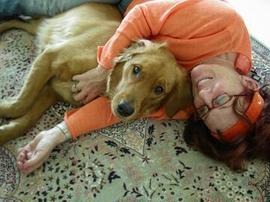The world’s leaders may be talking about what drives the global economy, but so am I.
After a long wait, the Kauffman Foundation has released the materials for its program fostering technology entrepreneurship, Fasttrac Tech Venture. True to form, Stealthmode started offering this program while it was still in pilot phase, with photocopied materials and rudimentary preparation. Now I am with a group of other technology supporters in a group to share best practices and get trained on how best to deliver these materials and get the most value out of the national efforts of the Kauffman Foundation. I can’t wait to go home and share what I’ve learned with the beta testers in our pilot program.
The Foundation has totally re-focused on high growth businesses, and is trying to foster them at every level. For kids, they have developed (with Disney) a game called Hot Shot Business (www.hotshotbusiness.com) that is aimed at introducing young teens to the joys of the business world. If you can read, you can play this on line, starting a pet spa or a landscaping business.
For those of us who lack an inner child to play the game with, Kauffman has launched a new site called EVenturing, collecting resources for entrepreneurs. And then there’s the Angel Capital Education Foundation (www.angelcapitaleducation.org) to educate potential angel investors.
But the jewel in the crown is really Fasttrac Tech Venture, the program that prepares would-be technology entrepreneurs for the realities of business. For two days, we’ve been sitting around discussing how best to deliver to engineers and life science researchers the realities of starting a company: the chance that you might part company with your co-founder buddies; the day you wake up and find out your independent contractor owns your company’s intellectual property; the ramifications of taking outside money from people whose motives you don’t understand.
The coolest thing about the new materials is probably the toolkits – everything from dilution calculators to 6-year financial projections, employment agreements, and free access to competitive data and market research. These documents have been prepared by experts and placed online where participants in the programs can see and use them during the course of the program.
Now that this program is generally available, the real test will come: to what extent can the process for starting and growing tech ventures be standardized? If Kauffman’s programs take the mystery out of running a business, will they free innovators to concentrate on their creations or solutions? Will the Foundation’s program for tech companies be as successful as its previous two programs in helping businesses grow?
On a grander scale, can this program foster American competitiveness, providing a support system for tech entrepreneurs that replaces the government support of countries like India and China? Will it raise the success rate of tech companies?
Not without the full spectrum of other initiatives — especially those aimed at instilling the spirit of entrepreneurship in youth and the ones aimed at capital formation. The Foundation has figured out that all these pieces work together, creating an environment that both prepares us for the future and takes our country back to its roots. Face facts: when the first colonists came to America, there were no jobs waiting for them. What powered our economy yesterday will have to power it again tomorrow.
technorati tags: entrepreneurship, kauffman foundation, startup, incubator


